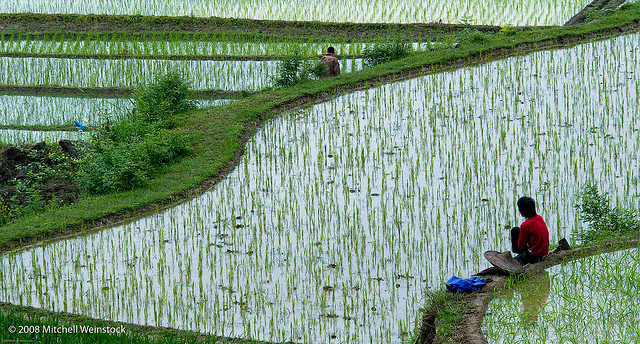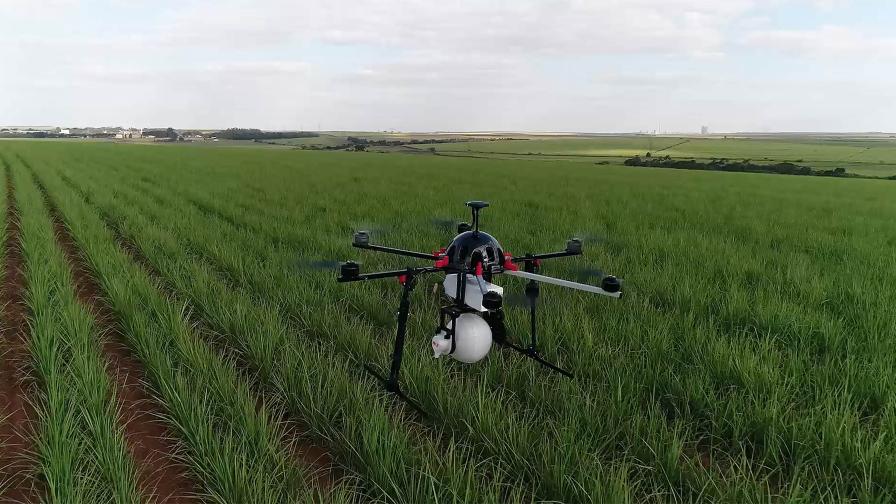Chinese Crop Protection Market Valued at $14 Billion at Farmer Level-Study

Terraced rice fields in Yangshuo
Credit: Flickr user Mitchell Weinstock
Creative Commons license
Drawing on newly enhanced resources in the region, research firm GfK has estimated the value of China’s crop protection market at $14 billion at the farmer level, making it the largest in the world by far.
The figure represents a substantial increase over the previous year’s assessments, due to more comprehensive coverage of the whole market, as well as growing intensification, GfK said. By contrast, the second-largest market, Brazil, is valued at $11.2 billion, according to GfK.
To arrive at the new finding, the new study “applied an extremely robust approach,” bringing together multiple government datasets, its existing China farm-level panel data – which covers roughly 50% of the market – and expanded interviews with farmers and retailers across the country.
“Now that we understand more clearly the huge opportunity that China represents, the need for insights and understanding of this market has become even more urgent,” said Ai Chen Kueh, head of Animal & Crop Health in the region for GfK.
“The Chinese crop protection market has been extremely dynamic over the last 10 years,” Kueh told Farm Chemicals International. At the top-line level, this is hinted at by large gains in terms of the overall area available used for agriculture, she said. For example, Ministry of Agriculture figures in the 2012 China Rural Statistical Yearbook show the total planted area for all crops rose 6.4% from 152.4 million ha in 2003 to 162.2 million ha in 2011, with at least equal adjustments for productivity and yield.
Various indicators and sources indicate the crop protection market itself has also seen rapid change and growth, Kueh said. Crop protection spending is climbing, according to findings from the National Development and Reform Commission, which monitors agricultural inputs across a large sample of farms across China annually. Spending in rice, for example, nearly doubled from CNY 333 ($54) per ha in 2002 to 634 ($104) per ha in 2011.
High-value fruit and vegetable crops show the strongest rates of spending increases per hectare from 2008-11, with citrus crop protection costs per hectare surging 53% from CNY 3,737 ($613) in 2008 to CNY 5,745 ($943) in 2011. GfK said figures collected in 2012 at the farmer level using multi-modal techniques fit with this overall pattern.
The specific factors that have contributed to this dramatic change in market size estimates, GfK says, include transformation of government policies and objectives; exchange rate; scale of crop area of China’s agriculture; agricultural industry structure and farm size; trends in crop protection usage intensity; types of crops and respective crop protection usage; domestic crop protection production; farm level consumption and its relationship to channel. Other factors that contribute to differing views on the market are the relative size of domestic vs. multinational manufacturers sales, channel complexity and margins, and large sales in “less visible” products such as herbicides.
Regarding the study’s methodology, Kueh said a multi-modal approach using six different complementary methodologies and data sources was taken: 1.) farm-level research from its annual panel studies on major crops such as rice, corn and vegetables; 2.) farm-level research on secondary crops such as cotton, pear, tobacco, etc. conducted on an ad-hoc basis; 3.) retail store checks across 27 provinces; 4.) The National Development and Reform Committee data set; 5.) The national registration authority data; and (6.) agricultural expert, advisors and consultant network across different provinces in China.
Li Bin, GfK’s director for ProvinceTrak in Beijing, said, “Finding the right ways to engage and serve wholesalers, retailers, farmers, and their influencers will be key to effective decisions in the region. GfK has invested in the assets and methodologies that will give crop protection manufacturers and others a powerful head-start toward success in China’s burgeoning crop inputs marketplace.”






